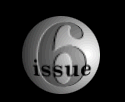



| ||
movie review by Gary Johnson [click on photos Studio Movie Web site: |
“We were somewhere around Barstow on the edge of the desert when the drugs began to take hold." That's how it starts--Fear and Loathing in Las Vegas--Hunter S. Thompson's gloriously drug-addled and alcohol-sodden masterpiece, an ode to abuse of all sorts. Director Terry Gilliam picks up Thompson's beat, with the help of twisted images, perversely cockeyed camera angles, claustrophobic close-ups, and hotel walls splattered with ketchup, mustard, and who-can-only-guess-what-else. Filmed in astonishing bursts of color courtesy of the Las Vegas strip--flashing rows of lights, neon signs, circus carnival casinos, clowns, trapeze artists, and not to mention those goddamned, can-you-believe-your-fucking-eyes lizard people in the bar, Fear and Loathing in Las Vegas remains as true to Thompson's novel as can ever be imagined. The rhythms and timbre of Thompson's prose have been retained, and thanks to Johnny Depp's inspired impersonation of Thompson himself, including Thompson's clipped speech pattern and the rounded movements of his limbs--as Depp crawls sideways across hotel lobbies like a king crab--Fear and Loathing feels as if Thompson himself is never far away (and unless I miss my guess, that was Thompson himself you'll see in a short flashback scene). Gilliam has even managed to capture the look and feel of Ralph Steadman's distorted ink blots/drawings/paintings/nightmares. Yes, the bats are there, swooping, soaring from the sky: "Holy Jesus! What are these goddamned animals?"
Fear and Loathing in Las Vegas is an astonishing piece of filmmaking that revels in the perversity of Thompson's spastic genius as it drags us through the hallucinogenic, drug-infused journeys of Raoul Duke (Johnny Depp) and his Samoan lawyer, Dr. Gonzo (Benicio Del Toro), as they slouch and crawl through hotel hallways, elevators, casinos, and greasy-spoon diners. But the most remarkable work takes place in their hotel room. Never has a room been trashed more horribly than by Duke and Gonzo. Resembling the ink-splattered canvases of Ralph Steadman, the hotel walls become the target for every imaginable substance that might harden and leave a crusty residue. While "White Rabbit" blares from a tinny tape player, Dr. Gonzo (completely dressed . . . well, at least from the waist up) soaks in his own filth in the bathtub, the water a putrid brown, pleading with Duke to toss the tape recorder into the water when the song hits its peak. "Just tell them I wanted to get HIGHER!"
This is not, I repeat, this is not a pretty picture.
But Gilliam's control of the camera, his delight in bringing the bizarre images to life shows through, nonetheless. Fear and Loathing in Las Vegas is an absolute masterpiece of art design and cinematography. However, (need I really say this?) "film" is a completely different medium than "literature." The immediacy of images on screen makes them finite, known, comprehensible. Whereas words on a page are open to thousands of interpretations, film tightens down the realm of possibilities and says "This is how it was." For the literal minded people in the audience, that might be a revelation, to let someone else's imagination go to work and show us what to envision. But it also has the effect of blunting the comedy. While Dr. Gonzo could be a comically bent character in the novel, in the movie, he becomes ugly and horrendous. While the novel, told entirely in first-person, funnels all perceptions through the guise of Raoul Duke, film distances us from the narrative, even with Gilliam's stylistic flourishes.
The filmmakers are going up against one helluva big gorilla--the changes that time has wrought upon our perception of recreational drug use. As a result, Fear and Loathing in Las Vegas, even with its electric twinges of cinematic brilliance, never truly escapes from the pathetic clutches of its own lead characters.
| |





